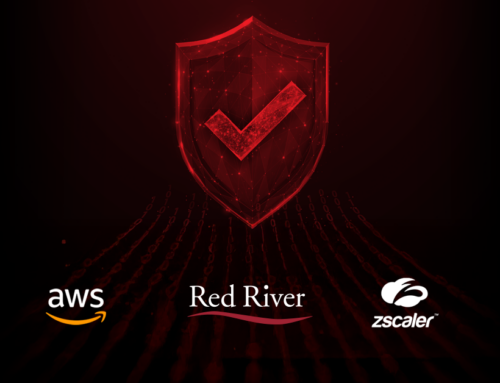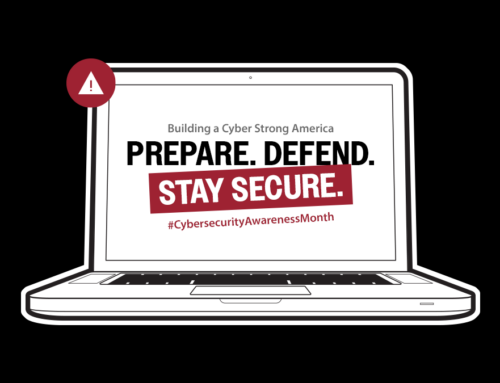
Managed EDR Can Keep You Safe – Here’s How
The need for businesses to improve their endpoint detection and response has never been greater. While advancements in technology provide cybersecurity professionals with more powerful defensive tools, hackers have matched those efforts. The hard data proves threat actors continue to infiltrate networks through laptops and handheld devices that sync with corporate databases.
- Nearly 60 percent of businesses suffered some type of cyberattack in 2024.
- Losses associated with Internet of Things (IoT) devices topped $330,000.
- The number of malware attacks exceeded 6 billion in 2023 and is trending upward.
- Approximately 95 percent of cyberattacks are financially motivated.
It’s difficult for statisticians to separate the incursions that start with IoT devices, smartphones, laptops and tablets, among others. However, industry experts estimate that millions, if not billions, of successful data breaches use endpoint devices as a kind of backdoor into corporate networks.
With the rise of sophisticated cyber threats, businesses need advanced security solutions to detect and respond to attacks in real-time. Managed Endpoint Detection and Response (EDR) offers proactive threat protection by combining AI-driven monitoring, rapid incident response and expert security analysis. This blog explores how Managed EDR enhances cybersecurity, reduces the burden on IT teams and provides 24/7 protection against evolving threats.
What is Endpoint Security?
We would be remiss to dive into a discussion about managed EDR without first clarifying what endpoint security covers and why it is vitally important. Endpoint security is an element of cybersecurity that focuses on defending the expanding perimeter of today’s business networks. It wasn’t that long ago that organizations almost exclusively used in-house networks that were connected to desktops by cables. Seems like the Stone Age compared to our current wireless landscape.
That being said, the growth in remote workforces, fast-tracked during the health emergency, also ushered in a pragmatic approach to allowing workers and other stakeholders to connect to cloud-based operations from handheld devices. We refer to these devices as endpoints.
They have become high-value targets for online criminals who recognize endpoints often lack heightened security measures. Following repeated barrages of phishing schemes, malware incursions, ransomware attacks and brute-force burglaries through endpoint devices, cybersecurity professionals see this area as a niche area of concern. While we’ll be discussing managed EDR here, these are alternative or companion ways of protecting endpoint devices.
- Antivirus Software: This traditional approach incorporates the latest products to detect and cure malware threats. The process calls for ongoing application updates as hackers devise ways to override or sidestep the protection.
- Network Access Control (NAC): This approach focuses on sorting out which users and endpoint devices are allowed access to a given network. Once allowed entrance, NAC also places restrictions on data and program access. Using firewalls and other measures, it functions much like the microsegmentation defenses employed in zero trust architecture. It’s a type of fail-safe cybersecurity approach that assumes hackers will find a way past endpoint protections. Sadly, the growing number of hacks supports that conclusion.
- Endpoint Encryption: This facet of endpoint and mobile device security has emerged as a mainstay. Encrypting the electronic communications between endpoints and others stifles a hacker gang’s efforts. Even if they intercept electronic communications, the criminals cannot take advantage of the information without a decryption code. Endpoint encryption provides stress-free access to even the most sensitive and valuable data.
- Internet-of-Things (IoT) Security: The software and firmware used to drive IoT devices have been repeatedly exposed for inherent vulnerabilities. Many of these devices interface with business networks or endpoints that could serve as a relay station. It’s essential to update firmware and decommission legacy products that cannot handle the determined cybersecurity measures needed to protect valuable and confidential information.
Challenges of Endpoint Security
The number of endpoint devices with the capacity to connect to businesses has experienced exponential growth. A small enterprise may have upwards of 22 with medium and large operations using over 110 and nearly 2,000 devices, respectively. These high-water marks are driven by the misconception that seemingly harmless items such as routers and printers are neither endpoints nor threats. Nothing could be further from the truth.
Just keeping track of them all and adding layers of protection remains a major task. These are other endpoint challenges that would benefit from a managed endpoint detection and response service provider overseeing their protection.
- Employee Use of Shadow IT
- Remote Device Management
- Ability to Monitor Endpoint Devices
- Managing Device Authorization
- Limiting Users and Data Access
It’s also critical to minimize the visibility of endpoint devices when workers are in the field. The public Wi-Fi at coffee shops, bookstores and libraries may as well be Venus flytraps, ensnaring unsuspecting remote employees. If there’s a silver lining to this seemingly overwhelming data protection adversity, managed EDR provides effective solutions.
What Is Managed EDR?
Managed EDR has emerged as a critical cybersecurity strategy that delivers enhanced endpoint device visibility, increases detection capabilities and allows security professionals to respond to threats in real time. By using a variety of tools, technology and procedures, a managed endpoint detection and response service provider sees the entire chessboard, so to speak, in which hackers are relentlessly attempting to infiltrate networks through these innocuous devices.
How Does Managed EDR Work?
Managed endpoint detection and response strategies start by compiling a record of suspicious activities that transpire on wide-reaching endpoints. This information provides the outfit’s cybersecurity team with threat intelligence that would otherwise go overlooked. Security professionals gain an opportunity to promptly respond to dangers that could linger undetected. A proactive and highly professionally managed EDR solution delivers constant monitoring and expansive endpoint visibility. These are ways in which managed EDR serves the data security needs of businesses.
Unmasks Attempted Stealthy Attacks
Paring advanced EDR technologies with inclusive visibility over an operation’s endpoint landscape, the security posture recognizes dynamic behavior patterns. Sometimes referred to as “Indicators of Attack,” or IOAs, the use of AI and machine learning allows security professionals to see patterns that would otherwise remain hidden. The ability to automatically detect threats has been a thorn in the side of cybercriminals.
Proactive Threat Hunting Capabilities
There’s a great deal of discussion about enhanced threat-hunting benefits in the cybersecurity sector. Threat hunting grew out of the rejection of the old break-and-fix model that reacted to incursions after the fact. Before cybersecurity professionals developed seek-and-destroy tools to bring the fight to hackers, companies simply tried to minimize the damage.
With managed EDR, organizations enjoy quiet continuity because cybersecurity partners deal with threat actors before the damage is done. A managed endpoint detection and response service provider reverses the roles by making hackers the hunted rather than the hunters.
Quick and Decisive Threat Containment
Managed EDR is usually a proactive facet of an overall cybersecurity posture that deters, detects and repels threat actors. Coupled with programs and policies such as zero trust architecture, EDR creates a formidable cybersecurity defense that even advanced hacking threats would struggle to overcome. One of the reasons a managed endpoint detection and response service provider advises company leaders to double down on defensive and proactive measures involves containment. A well-conceived EDR strategy can identify a danger almost instantaneously. Add that truncated critical threat alert time to an effort that hamstrings malware, ransomware and cybercriminals, and you have the prompt threat containment hackers fear. By isolating bad actors and their deplorable applications, your critical data won’t fall into the wrong hands.
Improve Investigative Measures
Consider the very real possibility that a number of employees and stakeholders with approved access to your cloud-centric business network browse unsecured platforms and download potentially malware-laced files. Though these actions typically violate endpoint cybersecurity policies, a sophisticated hacker could jump the defenses and penetrate your most confidential and valuable digital assets.
Although the managed endpoint detection and response protections would push back by expelling the danger quickly, some damage or losses are likely to occur. They may be pilfering off information from the vulnerable endpoint or gaining access to financial accounts and login credentials. Basically, bad things happened. Now comes the post-mortem, and the leadership team wants to know the “how” and “why” they suffered losses.
A cybersecurity breach investigation gives no one pleasure. But managed EDR helps identify the root cause so that it doesn’t happen again. The process includes meticulous digital record-keeping that provides decision-makers with critical data to understand how and why the incident occurred. Having that knowledge a mouse click away gives company leaders the actionable intel they need to make adjustments going forward.
Key Benefits of a Managed EDR Solution
Adopting a managed EDR posture offers organizations proactive threat-hunting and real-time detection opportunities that maintain heightened digital security. Employing a blend of automated responses and expert support, the right EDR provider helps forward-thinking industry leaders stay ahead of the security curve.
As many in the cybersecurity sector acknowledge, you never want to be perceived as the low-hanging fruit hackers pluck. Managed endpoint detection and response strategies keep your digital assets out of arm’s reach. These are other key benefits of managed EDR.
Advanced Threat Protection

Far exceeding traditional antivirus software protections, EDR locates and responds to advanced hacking ploys such as zero-day attacks, insider threats and others.
Continuous Monitoring
An expertly crafted EDR program enjoys the bandwidth to monitor hundreds, even thousands, of endpoint devices 24 hours a day, 7 days a week. Alerts are triggered anytime suspicious activity occurs via AI and machine learning programming.
Superior Support
A managed EDR provider possesses the knowledge and expertise to harden your security posture. Third-party managed IT cybersecurity firms focus on the nuances and next-gen technologies of digital security. Given that they undertake endeavors such as EDR, zero trust architecture and multi-factor authentication as a profession, companies gain access to their valuable insights. Partnering with a managed EDR provider means companies enjoy expert-level support.
Workload Reduction
Outsourcing cybersecurity to a firm with managed IT and cybersecurity expertise reduces the work-hours required of in-house staff members. This allows internal technicians to focus almost exclusively on profit-driving facets and processes. In other words, managed EDR teams operate tirelessly in the background, preventing breaches that would otherwise upend productivity.
Regulatory Compliance
The enhanced visibility and reporting abilities provided by managed EDR support give organizations a giant step forward in terms of meeting sometimes stringent data privacy and protection requirements. This approach to cybersecurity would support regulatory compliance mandates such as the Health Insurance Portability and Accountability Act (HIPAA) and Cybersecurity Maturity Model Certification (CMMC), among others. Not only does the approach meet or exceed such guidelines, but it also delivers immediate access to reporting metrics.
Choosing the Right Managed EDR Provider
There are three basic criteria business professionals would be well-served to consider when choosing a managed EDR firm. These include technical proficiency, managed services expertise and cost-effectiveness. If your operation isn’t fully safeguarded from hackers, assess the following when selecting a firm.
Threat Detection
Determine whether the managed EDR provider enjoys a proven track record of threat detection accuracy. Some outfits waste time with false alerts, largely because they lack the AI and machine learning expertise to tailor the technology properly. The inverse also holds true. If clients suffer data breaches due to endpoint detection and response shortfalls, the firm may not have the necessary experience.
Managed Services
It’s essential that your EDR partner has the personnel to provide remote managed services and respond to potential threats in real-time, night or day. While much of the cybersecurity stance leverages automation, an experienced professional must always be available to deal with advanced threats. Managed EDR is not a 9-to-5 proposition.
Cost-Effectiveness
Companies need to get a reasonable ROI on managed IT and cybersecurity. Discuss the pricing model before signing on the proverbial dotted line. The best firms offer scalable services that can ebb and flow with your needs.
Red River Provides Cost-Effective, Expert Managed EDR
Protecting valuable and confidential data grows increasingly difficult as hackers revise their criminal schemes. The financial losses, downtime, regulatory fines and tarnished reputation accompanying a data breach or ransomware takeover can hamstring an otherwise productive enterprise. If you are interested in learning more about managed EDR cybersecurity, Red River has solutions. Contact us today, and let’s get the process started.

written by
Corrin Jones
Corrin Jones is the Director of Digital Demand Generation. With over ten years of experience, she specializes in creating content and executing campaigns to drive growth and revenue. Connect with Corrin on LinkedIn.




